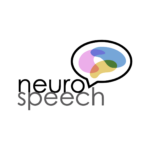About
The study of neural oscillations using high-resolution electroencephalography (HR-EEG) has uncovered irregularities in the auditory processing of language in individuals with Autism Spectrum Disorder (ASD). We intend to investigate the potential use of EEG recordings during language listening in young children with ASD to forecast their future language development and inform personalized therapeutic management. Through the analysis of how the brain responds to auditory signals, HR-EEG has the potential to offer valuable prognostic information and enhance progress monitoring. The outcomes of this research have the potential to lead to the development of individualized treatment tools and improved outcomes for children with ASD.
Research has also shown that irregular patterns in neural networks, such as increases or decreases in certain features, can have varying impacts on the severity and presentation of autism symptoms. Dysfunctional brain circuits associated with specific neural subtypes may stem from distinct cellular pathways, potentially linked to different genes with unique spatial and developmental expression. Given the heterogeneity of autism, it is possible that specific cellular pathways correspond to specific autism subtypes. With this in mind, we aim to identify unique brain structures and their corresponding neural oscillation mechanisms among different autism subtypes. Ultimately, this knowledge may inform the development of phenotype-specific interventions designed to target the neural circuits associated with each subtype.


